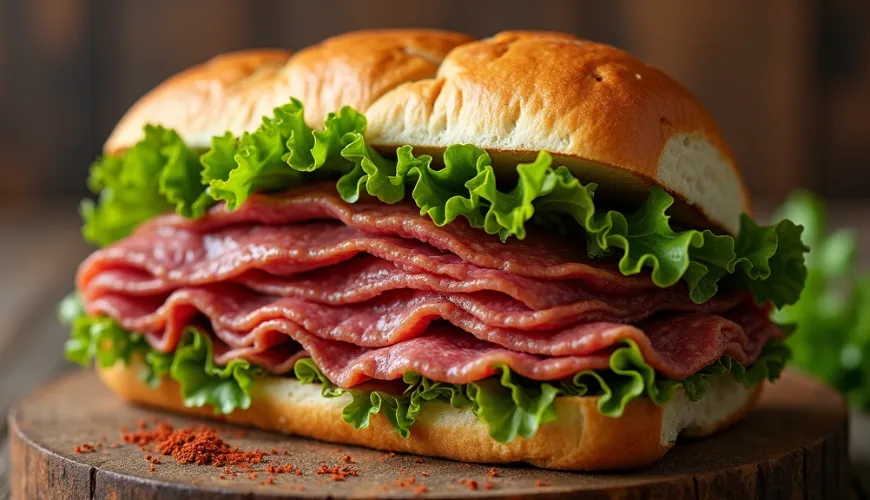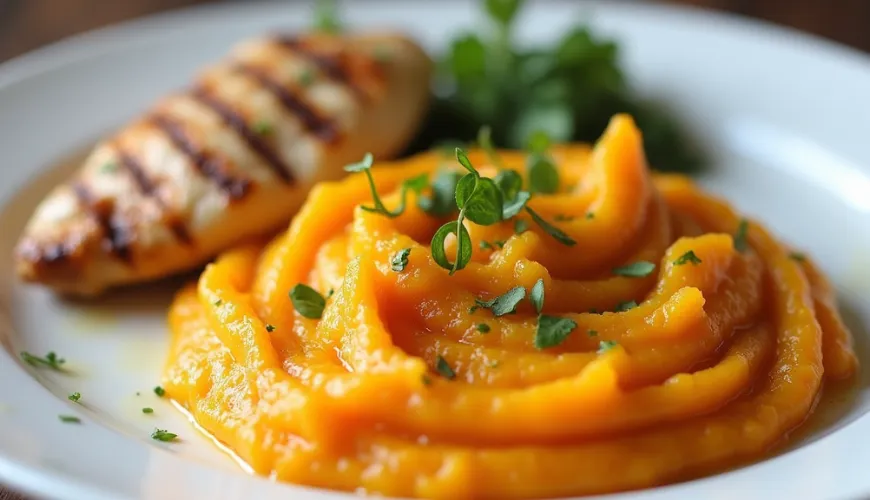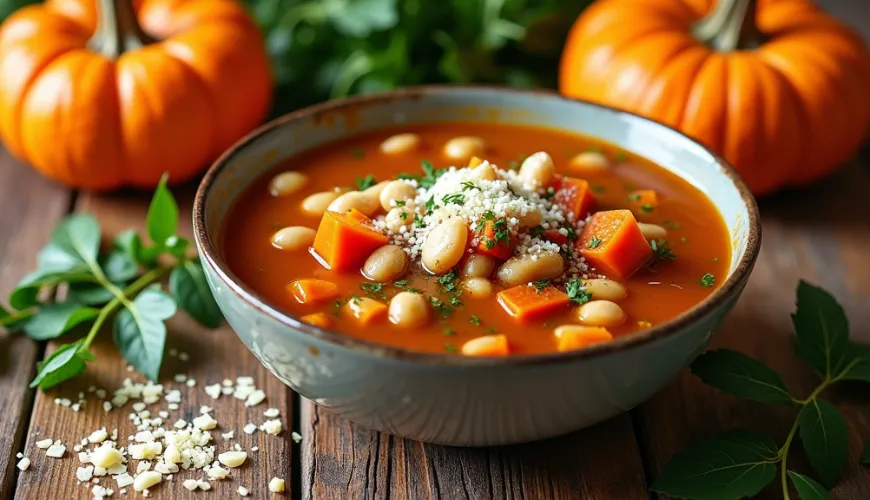
Discover creative uses for pumpkin puree in your recipes

How to Use Pumpkin Puree in the Kitchen
With the arrival of autumn, more and more pumpkins of all shapes and sizes appear at farmers' markets and store shelves. While some still perceive them more as Halloween decorations, others have long discovered their culinary potential. And it is the pumpkin puree that becomes the foundation of many great recipes—from sweet desserts to hearty lunches. If you're curious about how to use this vividly orange delicacy, read on.
What is Pumpkin Puree and How to Prepare It
At first glance, it's a simple thing: blended baked or boiled pumpkin. But the method of preparation and the choice of variety determine whether the puree will truly be flavorful. The most commonly used pumpkin for its preparation is the Hokkaido pumpkin, which has a delicate taste, a beautiful orange color, and doesn't need to be peeled. An alternative is the butternut squash, which has a creamier texture but requires peeling.
The simplest recipe for pumpkin puree looks like this:
- Cut the pumpkin in half and scoop out the seeds.
- Bake in the oven at 180 °C for approximately 45 minutes until the flesh is soft.
- Let it cool slightly and then blend into a smooth puree.
And it's important to know that pumpkin puree is not just a matter of sweet creamy soups or pumpkin lattes. On the contrary—it can be surprisingly versatile and pairs well with meat or as an unconventional side dish to the main course.
Potato-Pumpkin Puree
One of the most popular versions of incorporating pumpkin puree into everyday cooking is potato-pumpkin puree. While traditional mashed potatoes are a proven classic, try lightening them next time by adding baked pumpkin. The result will be a smoother texture, richer color, and a slightly sweet taste that beautifully complements roasted chicken or plant-based patties.
The combination of potatoes and pumpkin also lowers the glycemic index of the dish, which is appreciated not only by diabetics but also by those interested in healthier eating. Additionally, a bit of plant milk, ghee, or olive oil instead of butter can easily be added to the puree—creating a vegan alternative that tastes great.
Sounds good? Here's an approximate ratio: for 500 g of potatoes, use about 300 g of baked pumpkin. Boil or bake everything, blend, season with salt, pepper, and possibly nutmeg, and you're done.
Pumpkin Puree with Meat? Absolutely
Many people can't imagine that sweet pumpkin could pair well with meat. But pumpkin puree as a side dish to meat is a fantastic example of how a contrast in flavors can work. It typically pairs well with grilled or roasted chicken, pork tenderloin, or even fish like salmon. And if you don't eat meat, it also works well with plant-based substitutes such as legume patties or tempeh.
A little gastronomic note: in modern gastronomy, pumpkin puree is often combined with aromatic herbs like thyme, sage, or rosemary. This combination then stands out especially in connection with meat, adding both zest and subtlety at the same time.
For example, in one bistro restaurant in Brno, they serve roasted duck leg with potato-pumpkin puree with the addition of sage. The result is a harmonious plate where the robustness of the meat combines with the silky lightness of the puree, including the echo of autumn herbs. Guests regularly return precisely for this combination.
Pumpkin Puree as a Base for Creativity
Many people have fixed the idea of pumpkin puree as an ingredient in a few proven recipes—typically pies or soups—but in reality, it has a much wider use than it might seem at first glance. If you have a little left, definitely don't throw it away, it can be used in many ways. For example, mix it directly into batter for pancakes or crepes, giving them not only a beautiful color but also a slightly sweet taste.
Or try something more unconventional: mix it with a bit of roasted garlic, Parmesan, and some cream—and you have a wonderful base for a creamy pasta sauce. If you're a fan of risotto, feel free to replace part of the broth with the puree, making the result nicely creamy and a bit different than usual. Another interesting option? Pumpkin hummus—just classic chickpeas, tahini, a little lemon, and instead of water, just the puree. And if you want something healthier in the morning, add it to a smoothie along with a banana, cinnamon, and perhaps some oat milk. The result will pleasantly surprise you and you'll definitely be pleased that you used the puree fully and creatively.
It also surprisingly combines well with cheeses. So if you're looking for an original appetizer, try filling delicate tartlets with pumpkin puree mixed with goat cheese and thyme—a great autumn treat.
Nutritional Benefits That Come in Handy
Pumpkin is low-calorie, rich in beta-carotene (which converts to vitamin A in the body), fiber, and vitamins C and E. It also contains minerals like potassium, magnesium, and iron. Combined with potatoes, it creates a nutritionally valuable side dish that not only tastes great but also benefits our health.
---group-8ý---
From an ecological perspective, pumpkin is a crop that grows well in our latitudes and doesn't require importing from distant parts of the world. Thus, it presents itself as a local, sustainable ingredient that can be used instead of imported and processed foods.
Tips for Storing Pumpkin Puree
Made too much? Great news: pumpkin puree stores very well. It lasts in a sealed container in the refrigerator for up to five days. It also freezes well—ideally in smaller portions, perhaps in silicone muffin or ice molds. This way you can pull it out and use it as needed.
And if you don't feel like baking again each time, you can prepare a larger batch and can some of it. The puree can be canned similarly to fruit purees—it's important to follow hygienic rules and use sterile jars.
In the kitchen, it's often said that the greatest magic comes from simple ingredients. Pumpkin puree is precisely such an example—a subtle base with the potential to influence an entire dish. Whether you combine it with potatoes for a great side dish or use it as a gentle sauce for meat, it will always carry a piece of autumn mood with it. As the well-known chef and advocate of seasonal cooking Anna Jones says: “What we have closest is often the tastiest." And pumpkin puree is a beautiful proof of that.

